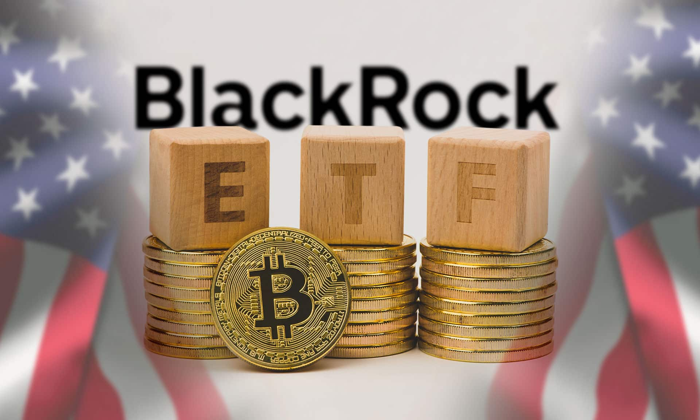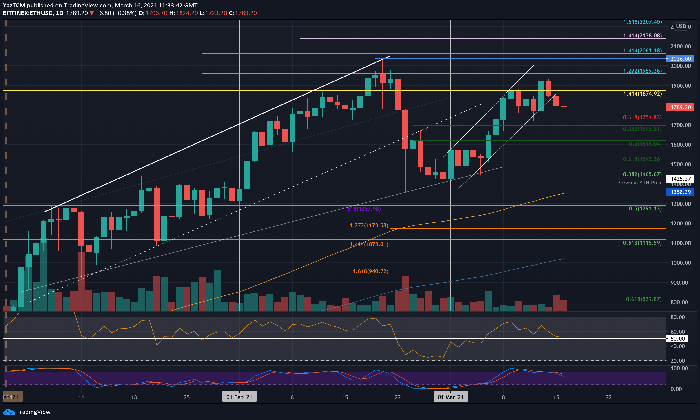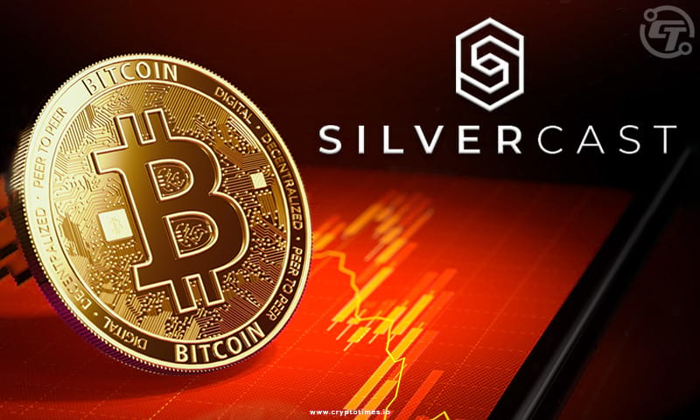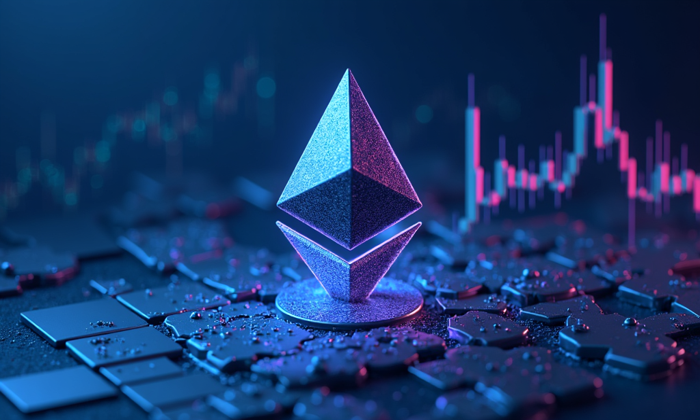The recent CryptoPunk NFT sell-off highlights a stark reality facing the digital art world, where top NFT collections are grappling with significant losses. An investor’s sale of a CryptoPunk at nearly $10 million less than what they initially paid underscores the broader struggles within the NFT market, where trading volumes have plummeted. Despite once soaring to dizzying heights, Ethereum NFT sales have come to a standstill, leaving many blue-chip NFTs echoing in the depths of decline. The data speaks volumes: a staggering 53% decrease in trading activities has impacted investor sentiment and participation. As the allure of CryptoPunk investments wanes, it raises questions about the future stability of NFT trading and what this means for collectors and traders alike.
A dramatic shift has occurred in the landscape of high-value non-fungible tokens, especially for celebrated collections like CryptoPunks, as recent sales reveal alarming trends. The substantial financial setbacks faced by NFT investors, coupled with a marked decline in NFT market activity, point to an unsettling period for digital collectibles. Many prominent blue-chip assets are experiencing sharp depreciations, with CryptoPunk transactions now being characterized by notable losses. The decline resonates across the NFT community, as the sales volume has receded, prompting a reevaluation of investment strategies in this virtual marketplace. This ongoing NFT slump suggests the necessity for investors to tread carefully as they navigate an increasingly uncertain terrain.
The Impact of the CryptoPunk NFT Sell-off on the Market
The recent sell-off of a CryptoPunk NFT, which resulted in a staggering loss of nearly $10 million, sheds light on the ongoing struggles that blue-chip NFT collections are facing. The sale, completed for 4,000 ETH, indicates a worrying trend in the NFT market where high-value items are being sold at steep losses. As the NFT trading volume continues to decline, this sell-off exemplifies the loss of confidence among investors who once viewed these digital assets as stable investments. The NFT market decline is evident as traders increasingly seek liquidity, prioritizing quick sales over long-term holding.
This dramatic financial loss signifies more than just an individual investor’s setback; it reflects the broader malaise affecting the NFT landscape. With Ethereum NFT sales down more than 53% in the past month, the market’s resilience is in question. Investors are now grappling with the harsh reality that the once-booming NFT market has plateaued. Historical highs, such as CryptoPunks reaching a floor price of 113.9 ETH, now seem unreachable as prices tumble to current lows around 43 ETH.
Understanding the Factors Behind NFT Market Decline
The decline in the NFT market can be attributed to multiple interrelated factors, ranging from decreased trading volume to the maturing of an increasingly skeptical investor base. As illustrated by the staggering losses incurred by prominent NFT investors, the allure of blue-chip collections like CryptoPunks is fading. Investors are reconsidering their positions given that the market does not exhibit the explosive growth it once did during the 2021 frenzy. Many collectors who once participated in NFT trading have begun to question the sustainability of prices and the viability of holding high-value tokens.
Moreover, the external regulatory scrutiny, particularly from financial authorities such as the U.S. Securities and Exchange Commission, has instilled hesitation among prospective buyers. The threat of NFTs being classified as securities may impede their trading, creating further instability in the NFT ecosystem. As the market shifts, traditional metrics of investment, such as utility and scarcity of NFTs, are becoming increasingly critical in determining their value. Investors are now seeking blue-chip NFT collections that can withstand market fluctuations, making the current environment particularly challenging for emerging projects.
While the Pudgy Penguins showcase resilience by achieving all-time highs, most collections are still reeling from market pressures. This contrasting performance highlights the necessity for innovative and dynamic approaches in the NFT space. Only time will reveal how the largest NFT collections adapt to these market conditions.
The Role of Ethereum in NFT Trading Volume
Ethereum has long served as the backbone of the NFT market, providing an ideal environment for artists and traders alike. Yet as NFT trading volume on Ethereum plummets more than 53%, the implications for overall market health are grave. Ethereum’s dominance in the NFT space means that any downturn in trading volume can result in reduced interest from both buyers and creators. Many traders are now exploring alternative blockchain platforms, such as Polygon, which has also seen a 41% decline in its NFT trading volume, further indicating the volatility of the digital art and collectibles market.
The concentration of NFT transactions on Ethereum creates a dependency that amplifies the ramifications of price falls, such as the decrease in value of CryptoPunks. As trading slows, the overall liquidity in the market diminishes, making it increasingly difficult for investors to offload their digital assets without incurring significant losses. This cycle of declining trading volumes and falling asset prices feeds into one another, suggesting that a sustained recovery may be difficult without renewed investor interest and confidence in the marketplace.
Navigating Market Volatility: CryptoPunk Investment Strategies
Investing in CryptoPunks and similar blue-chip NFT collections requires a nuanced approach given the current market volatility. As recent losses demonstrate, simply buying and holding may not work for every investor, especially those who cannot afford large losses. One strategy is to actively engage in market analysis, recognizing when to enter or exit positions based on real-time trading volume data and market sentiment. Keeping abreast of developments in the Ethereum NFT space can also provide valuable insights into future investments, allowing investors to make informed decisions.
Additionally, diversification is key. Investors should not put all their funds into a single collection, such as CryptoPunks, as the singular focus can increase the risk of substantial losses. Instead, spreading investments across multiple NFT projects may mitigate risk. Paying attention to emerging collections, alongside established ones, may yield better outcomes as the NFT market adapts to new trends and technologies. As with any market, understanding the fundamental value proposition of the assets in question—such as their rarity, aesthetics, and artistic merit—is crucial in navigating this complex environment.
Market Recovery Prospects for Blue-Chip NFTs
Despite the current state of affairs in the NFT market, there are signs of hope that blue-chip collections like CryptoPunks may recover. Market analysts point to the upcoming regulatory decisions as potential catalysts for increased confidence among investors. Should clarity and favorable regulations arise, the influx of new capital could revitalize trading volumes, breathing new life into the industry. Additionally, strategic moves by large players in the NFT space, including Yuga Labs’ rumored sale of its intellectual property, could ignite interest and drive a resurgence in engagement with the collection.
Moreover, the growing appreciation for NFTs beyond mere collectibles—recognized for their potential in gaming, virtual real estate, and social tokens—is generating renewed interest in the space. This evolving narrative may expand market access and utility for blue-chip NFTs, introducing crypto enthusiasts and collectors to invest in established collections. For now, the NFT landscape remains tumultuous, but understanding these emerging dynamics may allow traders to effectively maneuver through this period of market decline.
Recent Transaction Trends in NFT Trading
The recent ups and downs in NFT trading highlight a significant shift in buyer behavior and transaction patterns. The dramatic sell-off of a CryptoPunk NFT for a 10 million dollar loss underscores the current reality of an unpredictable marketplace. Historical data suggests that larger transactions tend to dominate the landscape, but as evidenced by the decline in general trading volume, smaller, individual transactions are becoming more common as investors seek to liquidate their holdings rather than hold onto assets that may continue depreciating.
Interestingly, even amidst downturns, some transactions do stand out. For instance, the fact that the sale of the CryptoPunk for 4,000 ETH still ranked as one of the larger NFT sales in the past month reveals an undercurrent of high-value trading, albeit with caution. As traders offload risk-laden assets, the disparity between large-scale NFT transactions and the average trading activity is becoming stark. This trend points to a bifurcation within the market, where whales potentially dictate the pacing for recovery while smaller investors adapt to the challenges posed by a contracting market.
The Future of NFT Market Dynamics
As the NFT ecosystem evolves, it is essential to consider future market dynamics that could reshape investment strategies for assets like CryptoPunks. Stakeholders, including investors, creators, and platforms, must adapt to the shifting landscape characterized by regulatory scrutiny and a changing economic environment. This adaptability extends beyond simply understanding fluctuating prices but requires an examination of the intrinsic value of NFTs and their role within the broader digital ecosystem.
Emergent technologies, such as layer 2 solutions and more efficient blockchain alternatives, could play a critical role in rejuvenating the NFT market. Increased access to cheaper transactions and lower fees may entice more users to engage with NFTs actively. Furthermore, the evolution of new use cases beyond mere collectibles—such as gaming integration and social networking functionalities—may serve as a pathway for the market to regain vibrancy. As these dynamics unfold over time, a renewed focus on innovation and community engagement could be pivotal for driving interest in blue-chip collections like CryptoPunks.
Investing in Blue-Chip NFTs: Risks and Opportunities
Investing in blue-chip NFTs, particularly in a volatile market, comes with its share of risks and opportunities. On one hand, high-profile collections like CryptoPunks hold cultural significance, potentially ensuring their value over the long term. Investors may find comfort in their proven track record, especially as they remain part of the foundational narrative of the NFT space. Moreover, the increasing integration of NFTs into broader industries—such as virtual reality and gaming—may create new demands and opportunities for value appreciation.
Conversely, the current state of market decline should not be overlooked. As seen with the substantial losses incurred by investors, the risks are palpable, and timely entry points into the market are critical. Understanding factors like the liquidity of the asset, the market climate, and the overall performance of Ethereum price levels are crucial when considering investments. By conducting thorough research and remaining aware of the broader market movements, investors can better position themselves to capitalize on potential rebounds in blue-chip NFT collections.
The Role of Community in NFT Success
In the world of NFTs, community plays an essential role in determining the success and sustainability of various collections, including blue-chip ones like CryptoPunks. Active communities around these NFTs often contribute to maintaining liquidity and interest in the market, which can be vital amidst declining trading volumes. The interaction among collectors and the sense of belonging can significantly boost the performance and appeal of a collection. For instance, online forums, Discord servers, and social media platforms are instrumental in building rapport among investors, fostering collaborations and partnerships.
Moreover, the community’s involvement often augments the perceived value of NFTs, driving demand and price stabilization during downturns. This communal aspect proves invaluable in shaping the potential for recovery. When strong community engagement is present, it can effectively counteract negative sentiments, helping to attract new investors even in challenging market climates. Thus, for blue-chip NFT collections, cultivating a robust community could be pivotal for their ongoing relevance and value retention.
Frequently Asked Questions
What factors contributed to the recent CryptoPunk NFT sell-off?
The CryptoPunk NFT sell-off is largely attributed to a significant decline in the NFT market, which has seen trading volumes drop over 53% on Ethereum. The overall investor interest in blue-chip NFT collections, including CryptoPunks, has waned since their 2021 peaks, leading to decreased prices and liquidity in the market.
How much did the investor lose in the CryptoPunk NFT sale?
An investor sold a CryptoPunk NFT at a realized loss of nearly $10 million. Initially purchased for approximately $15.7 million (4,500 ETH), the NFT was sold for around $6 million (4,000 ETH), highlighting the stark decline in Ethereum NFT sales and the overall NFT market dynamics.
What is the current floor price of CryptoPunk NFTs?
As of now, the floor price for CryptoPunk NFTs sits at about 43 ETH, or approximately $68,000. This price reflects a more than 61% decrease from its record high of 113.9 ETH reached in October 2021, underscoring the challenges facing the NFT trading volume and the blue-chip NFT market.
What has happened to Ethereum NFT sales recently?
Ethereum NFT sales have experienced a severe downturn, with trading volumes falling over 53% in just one month. This decline is indicative of a broader stagnation in the NFT market, affecting traditional blue-chip NFT collections, including CryptoPunks and the Bored Ape Yacht Club.
Are CryptoPunk NFTs still considered a good investment?
While CryptoPunk NFTs are regarded as blue-chip NFTs, the significant price drop and recent sell-offs have raised questions about their investment potential. Investors should consider the current NFT market decline and fluctuating Ethereum prices before investing in CryptoPunk NFTs.
What impact did Yuga Labs’ actions have on CryptoPunk prices?
Rumors that Yuga Labs may sell CryptoPunk’s intellectual property temporarily boosted the floor price by 13%. However, overall, CryptoPunks, like other blue-chip NFTs, have seen a consistent decline in prices since the 2021 NFT market highs.
What are the differences in performance between CryptoPunks and other NFT collections?
While CryptoPunks have experienced a notable decline, other collections like the Bored Ape Yacht Club and Mutant Ape Yacht Club plummeted by 89% and 93%, respectively. In contrast, the Pudgy Penguin collection has recently performed well, achieving a new all-time high and significant sales volume, demonstrating varied market dynamics within the NFT space.
Why is the CryptoPunk NFT sell-off significant for the NFT market?
The CryptoPunk sell-off is significant as it represents the challenges faced by blue-chip NFTs and indicates the broader NFT market decline that started after the explosive growth in 2021. This major loss and the decreased trading volume highlight shifts in investor sentiment and potential caution among NFT market participants.
| Key Points |
|---|
| An investor sold a CryptoPunk NFT at a loss of nearly $10 million, highlighting the declining NFT market. |
| The NFT sold for 4,000 Ether, valued at over $6 million at the time of sale. |
| The original purchase price of the NFT was 4,500 ETH, or about $15.7 million a year ago. |
| NFT trading volume on Ethereum has fallen over 53% in the past month, reflecting low trader interest. |
| CryptoPunks’ floor price is currently about 43 ETH, down 61% from a peak of 113.9 ETH in October 2021. |
| Other top collections like Bored Ape Yacht Club have decreased significantly in value, with 89% declines noted. |
| The Pudgy Penguins collection defied the trend by reaching a new high and leading sales volume in early 2025. |
| The SEC concluded an investigation into Yuga Labs about the status of NFTs as securities, impacting market dynamics. |
Summary
The recent CryptoPunk NFT sell-off indicates a significant downturn in the NFT market, with a prominent investor incurring nearly $10 million in losses. This decline reflects broader trends of falling trading volumes and reduced market interest, particularly within blue-chip collections. As traders navigate these challenging conditions, some NFT prices have seen drastic drops, highlighting the volatility and uncertainty that continue to characterize this sector.
The recent CryptoPunk NFT sell-off has sent shockwaves through the digital art and cryptocurrency communities, highlighting significant challenges in the NFT market. Following a staggering loss of nearly $10 million by an investor, the once-booming blue-chip NFT collections are grappling with a notable decline in demand and trading volumes. As Ethereum NFT sales plummet—down over 53% in the past month—the impact on CryptoPunks and other prestigious collections is glaringly evident. While many collectors hoped for a resurgence, the stark reality of CryptoPunk losses paints a picture of an industry in turmoil. This significant downturn reflects a broader trend affecting NFT trading, with many prominent projects struggling to regain their former glory in the marketplace.
In the realm of digital collectibles, the recent downturn involving CryptoPunk assets signifies a critical juncture for investors and collectors alike. Known for their unique and iconic status, these NFTs are experiencing a troubling trend as significant financial losses surface amid a dwindling interest in high-value digital assets. As major labels begin to feel the contraction in NFT trading activity, industry watchers are left pondering the future of these digital portfolios. With a once-vibrant ecosystem now facing an uphill battle against market fluctuations, alternative digital tokens and collections are grappling with their own challenges in this evolving landscape. The ongoing challenges faced by such high-profile assets raise vital questions about value retention and investment strategies in the NFT sphere.














